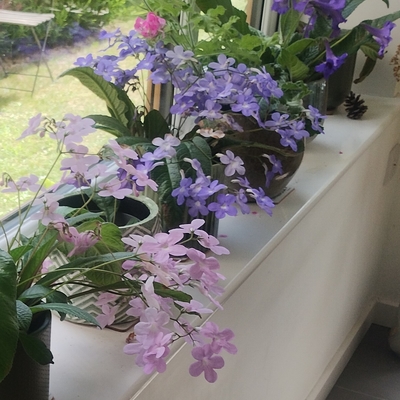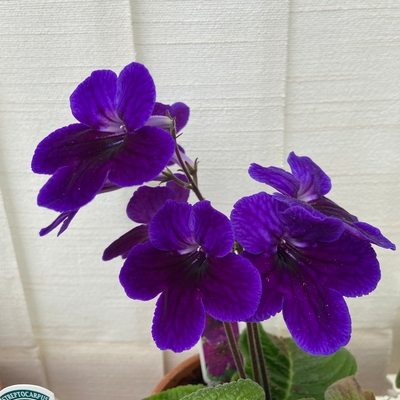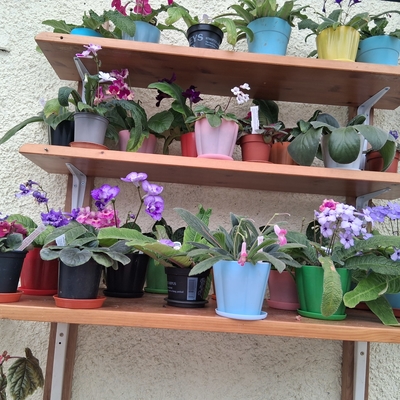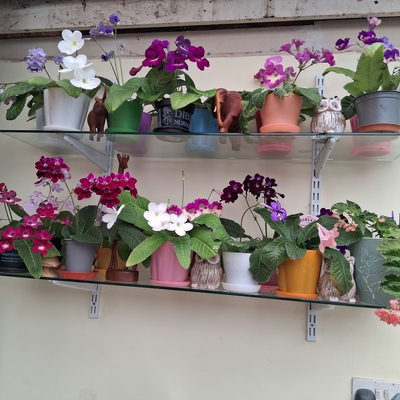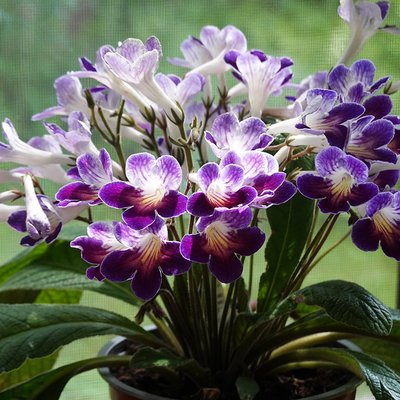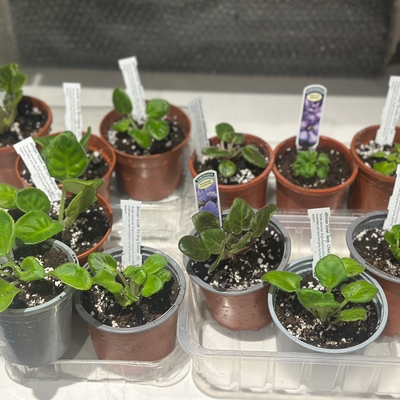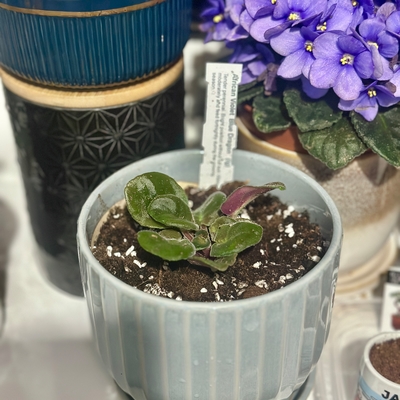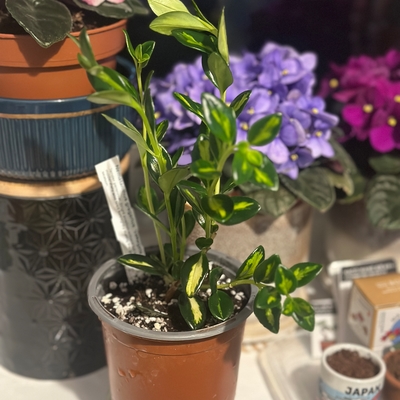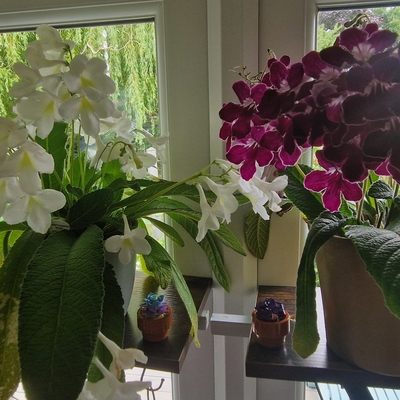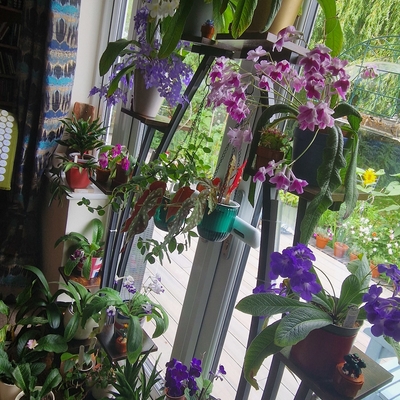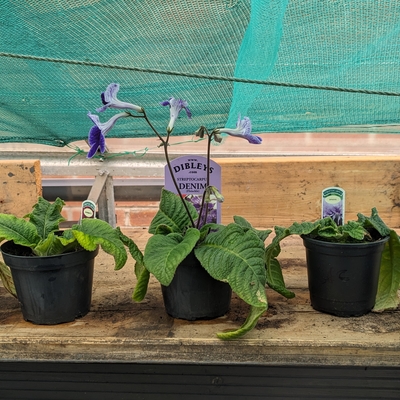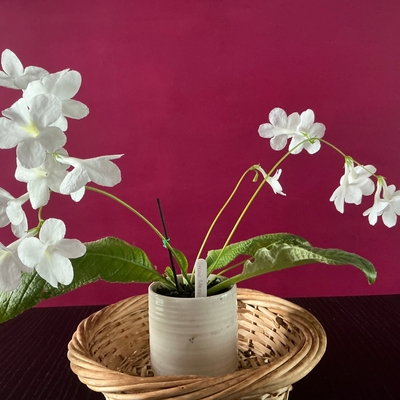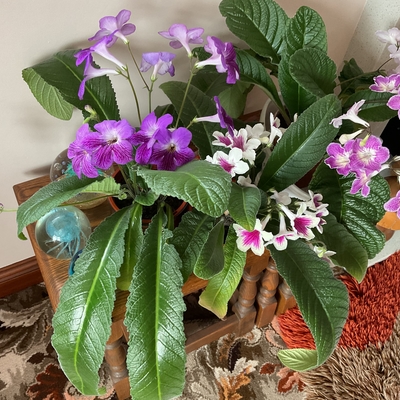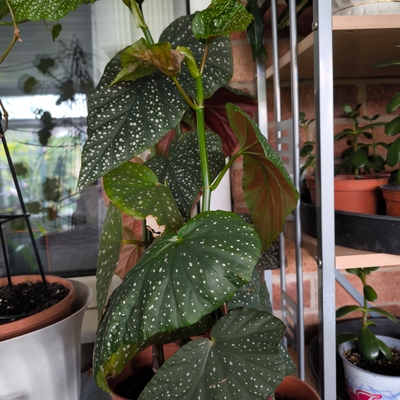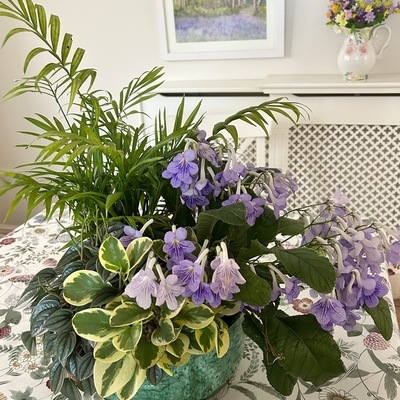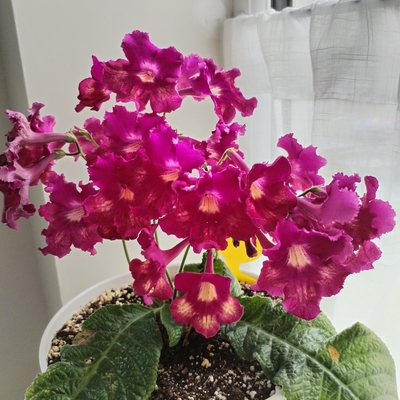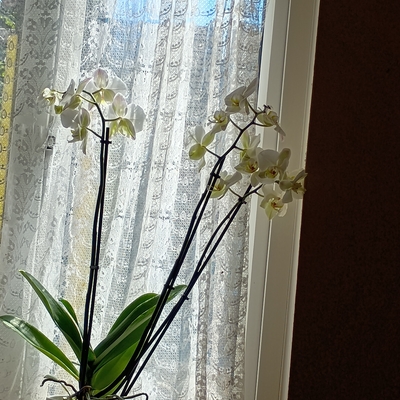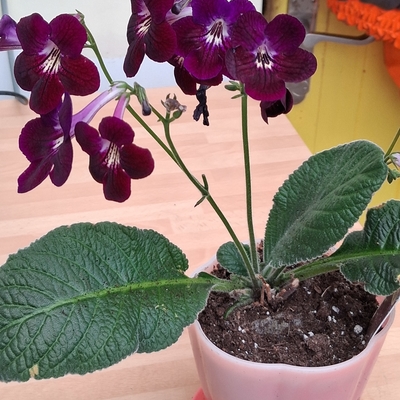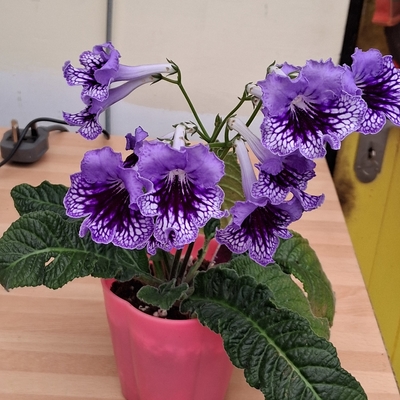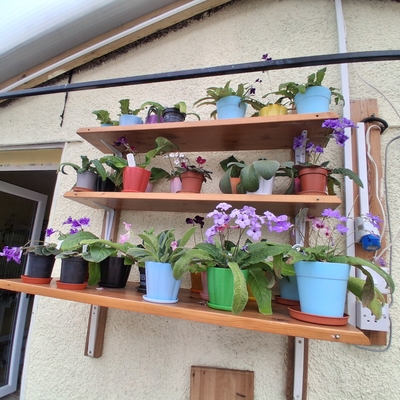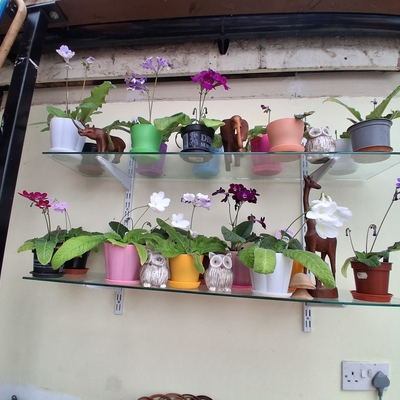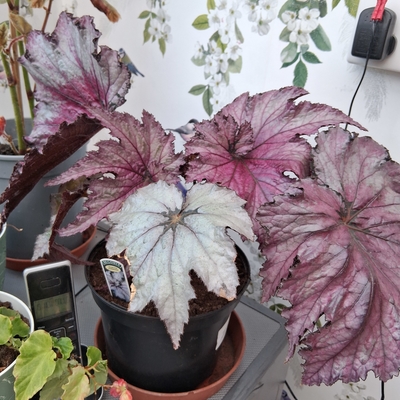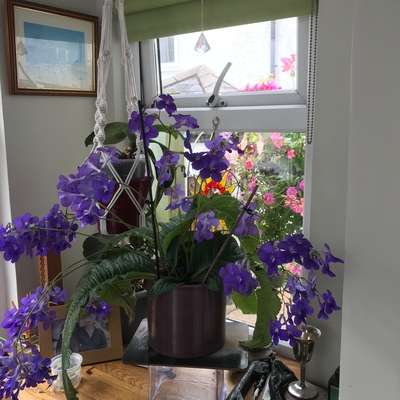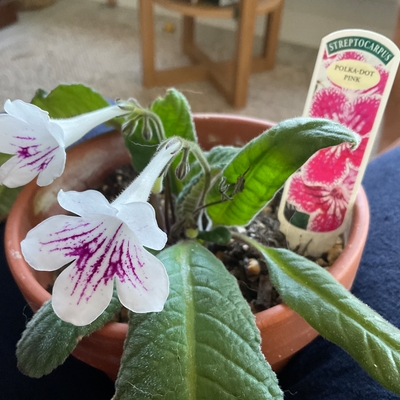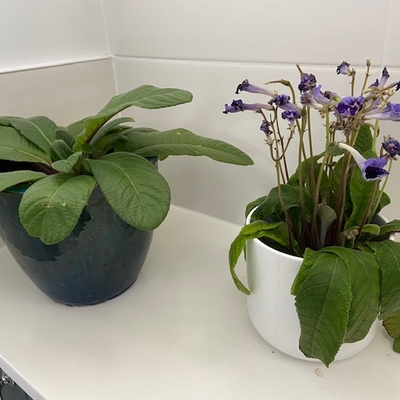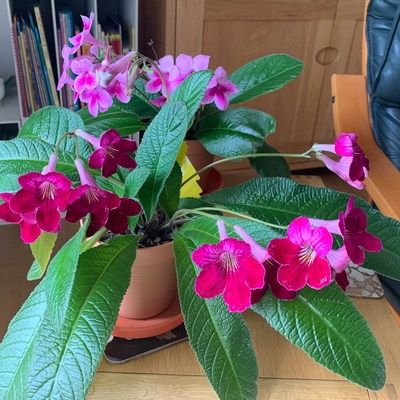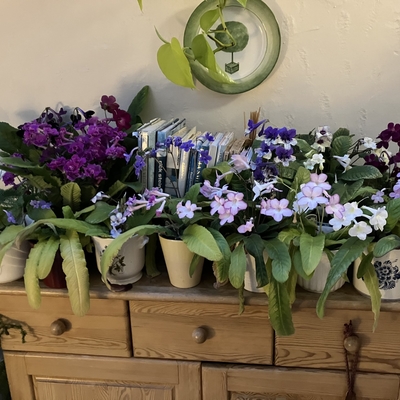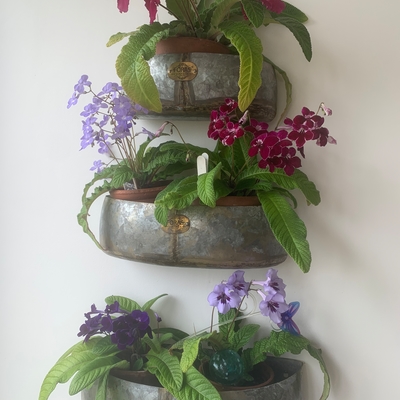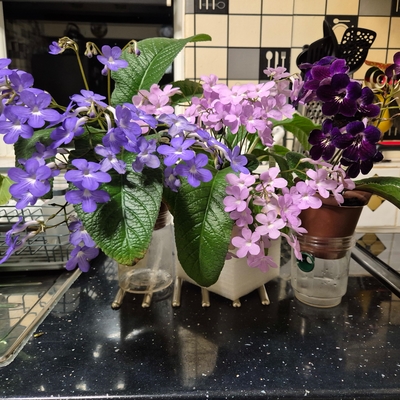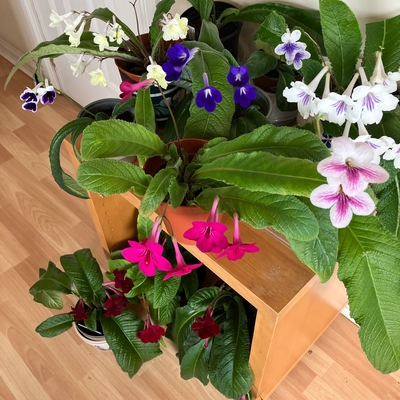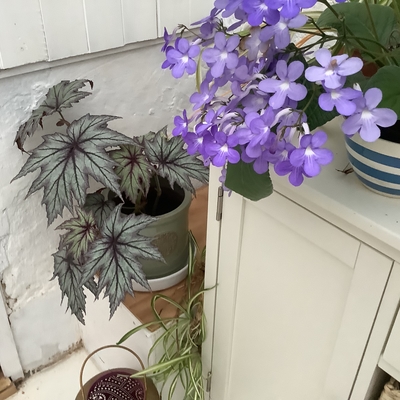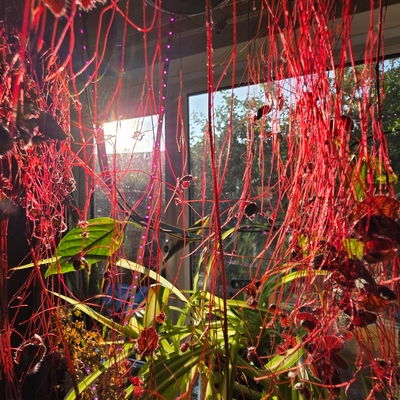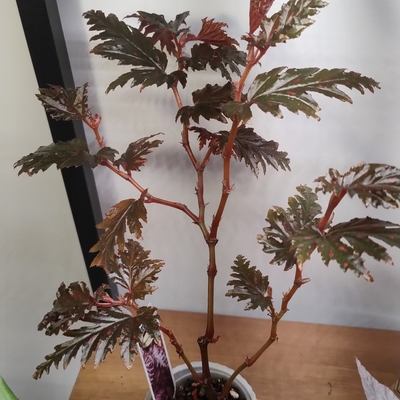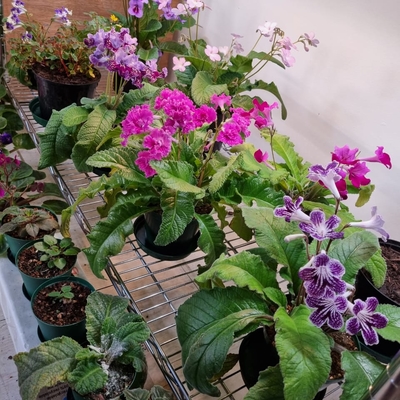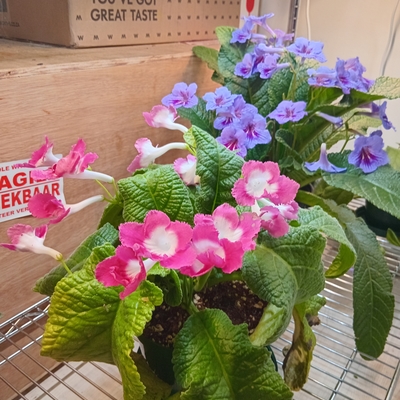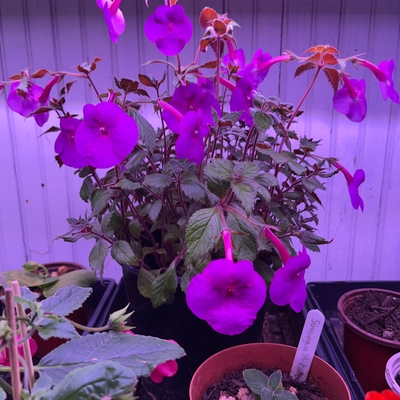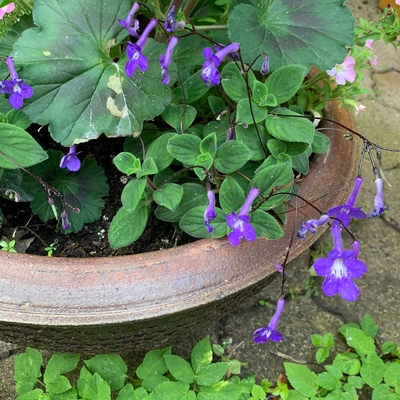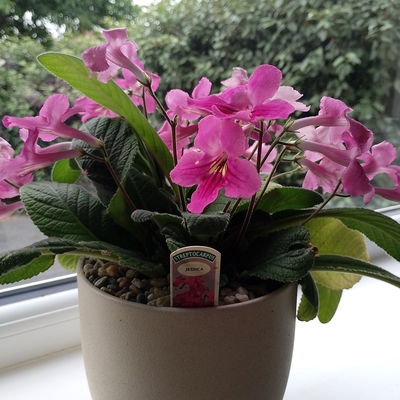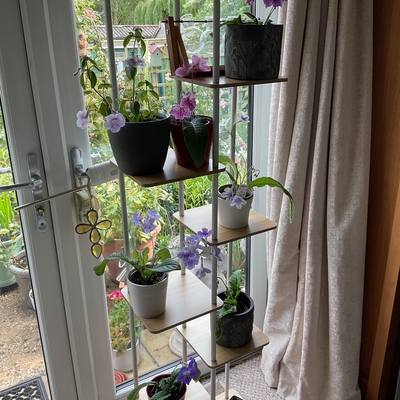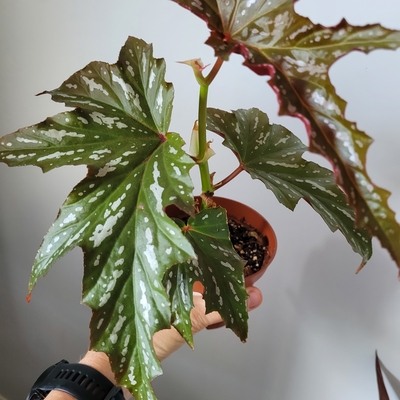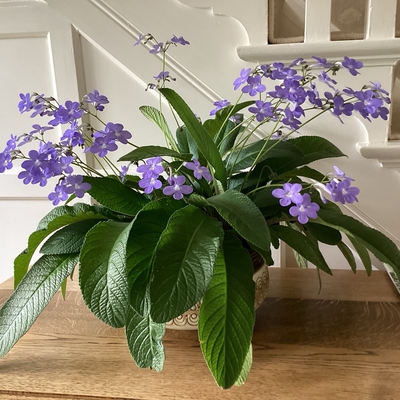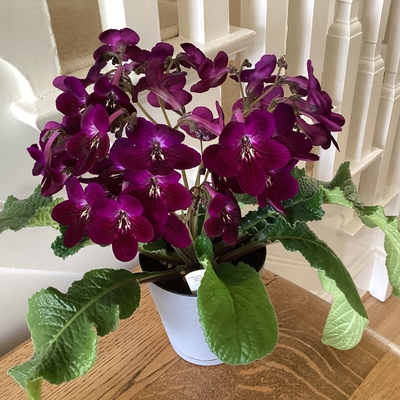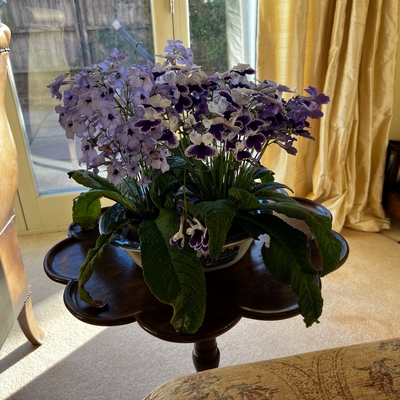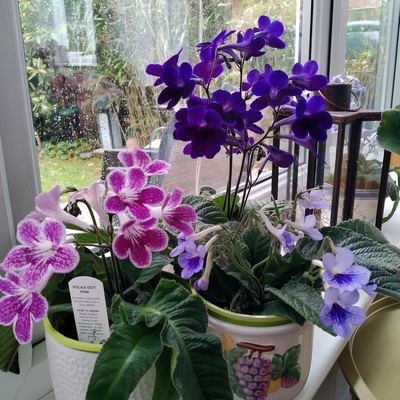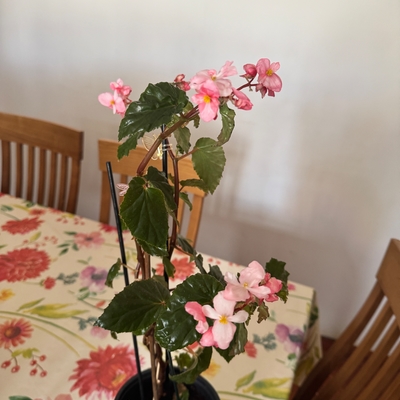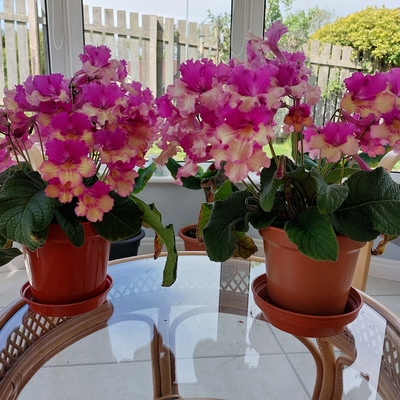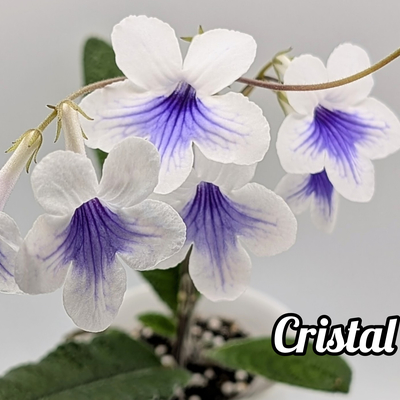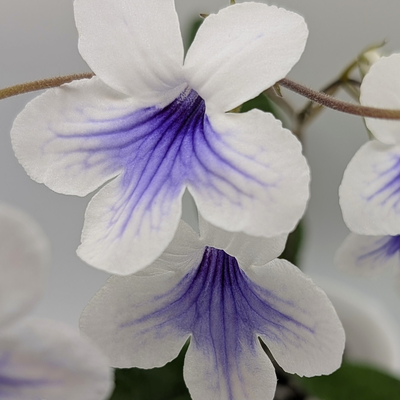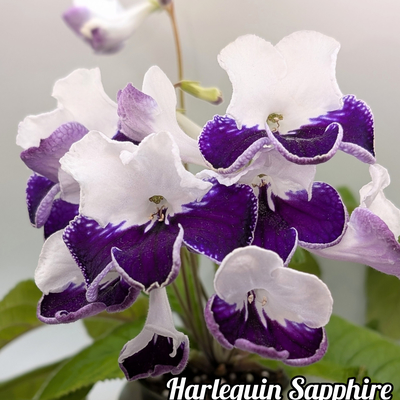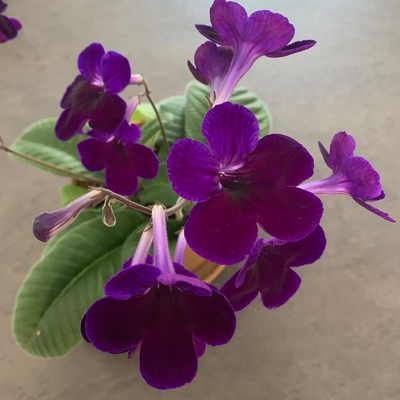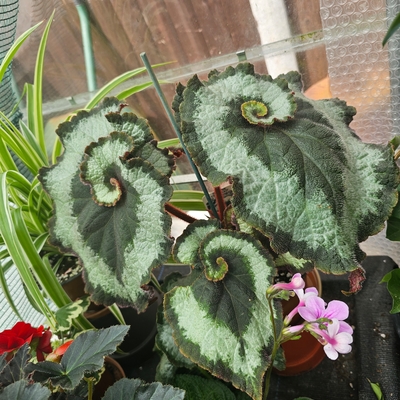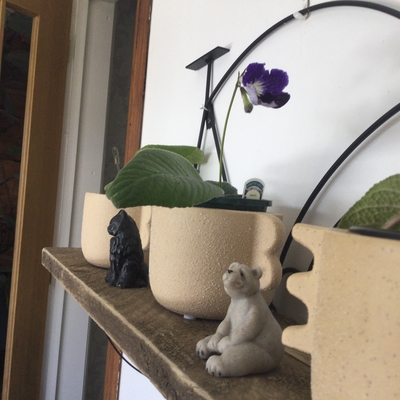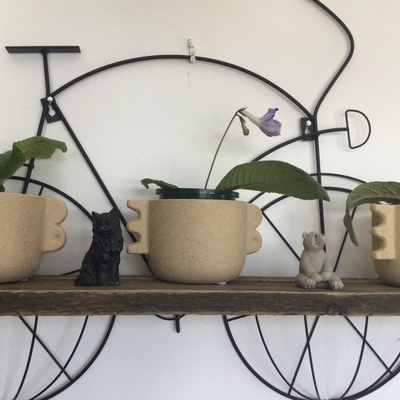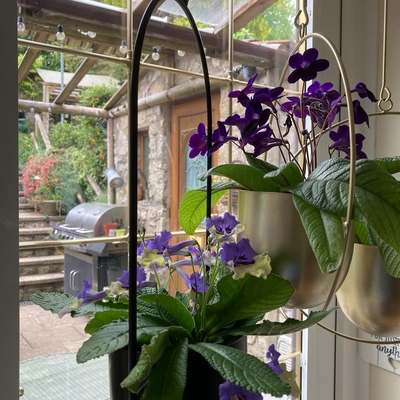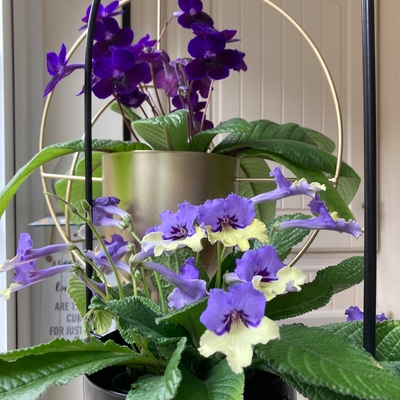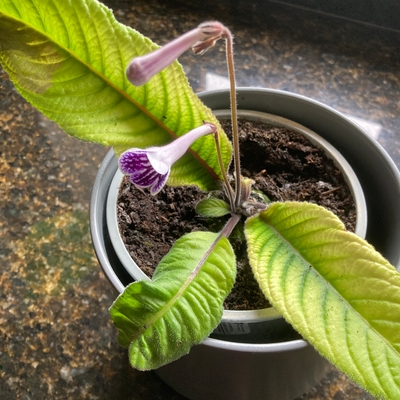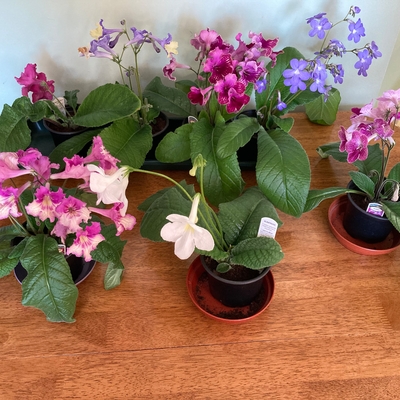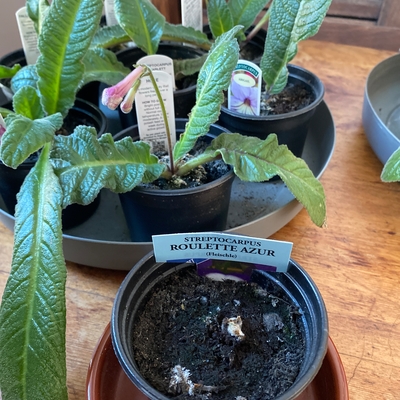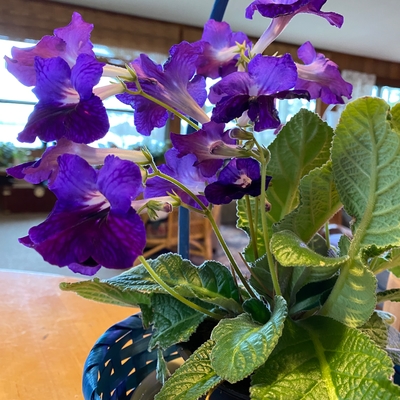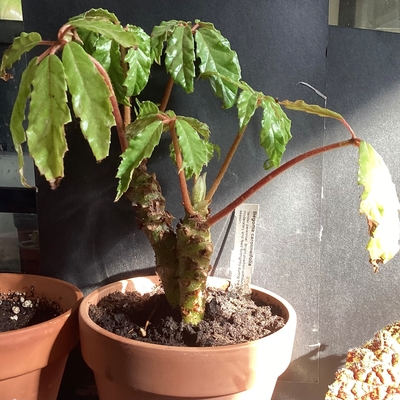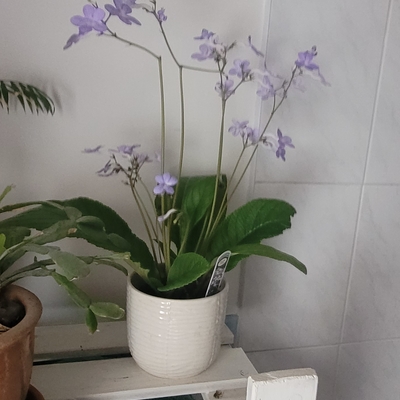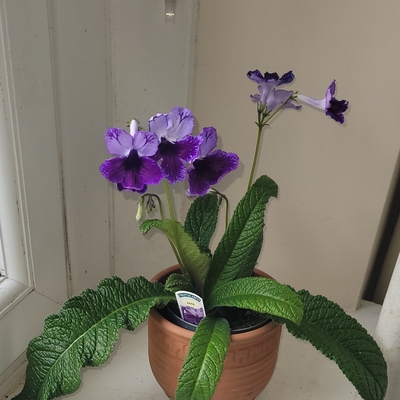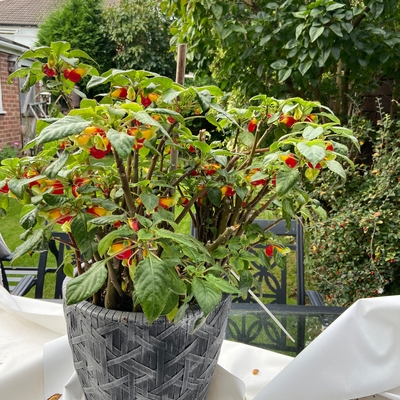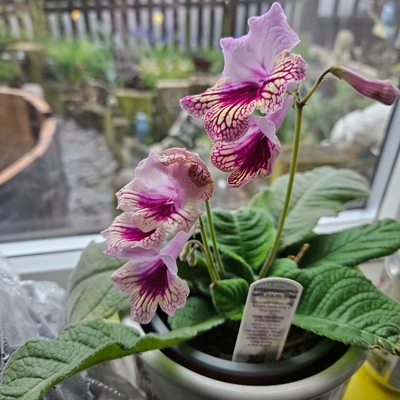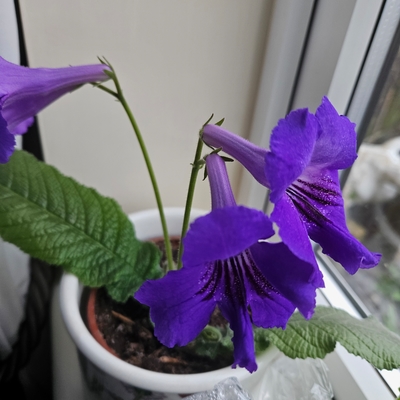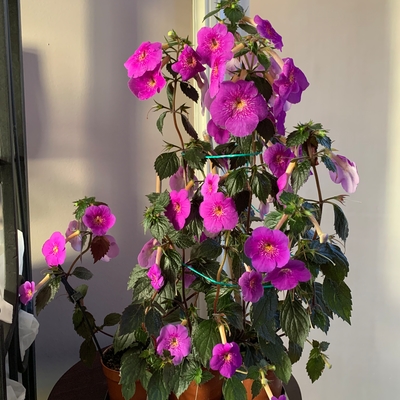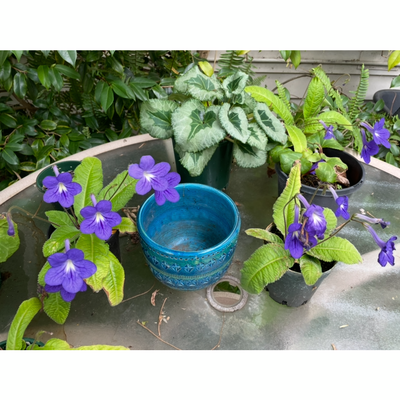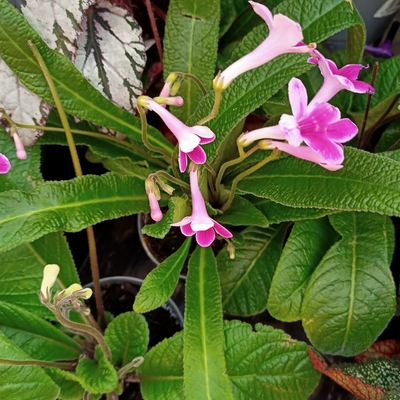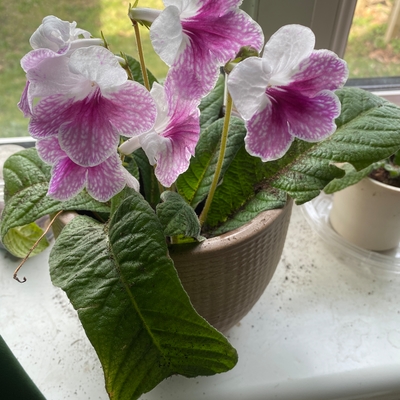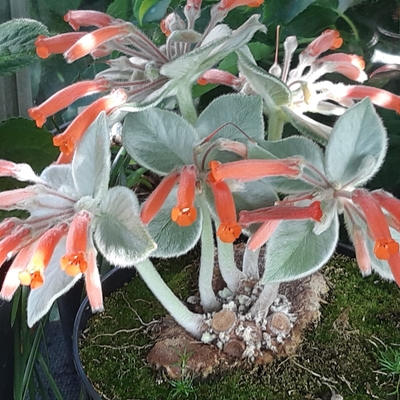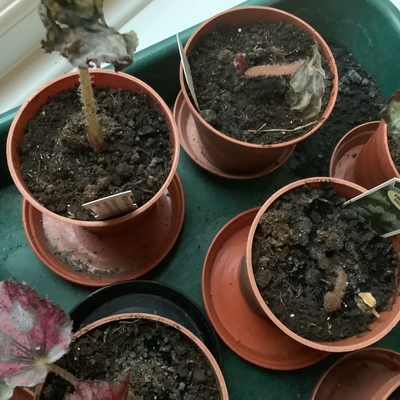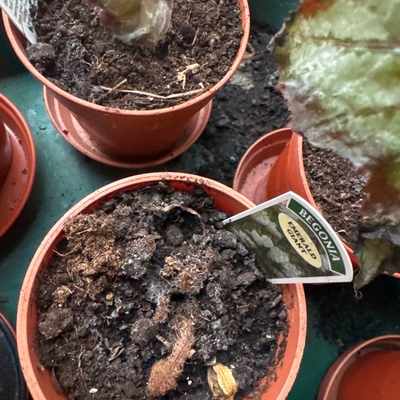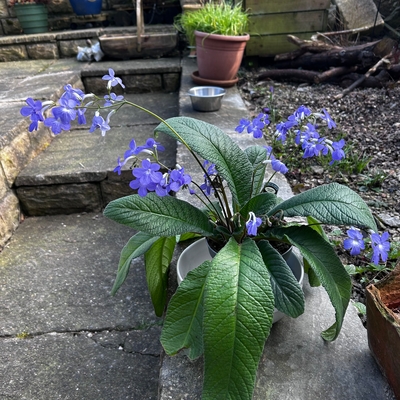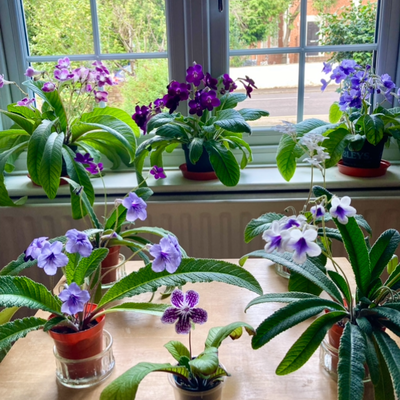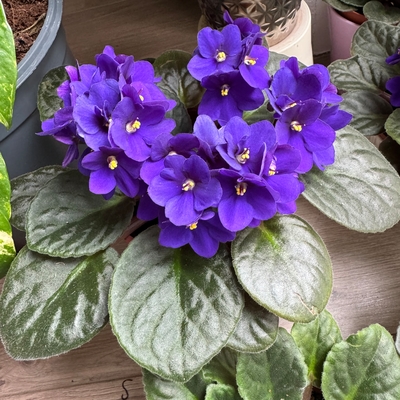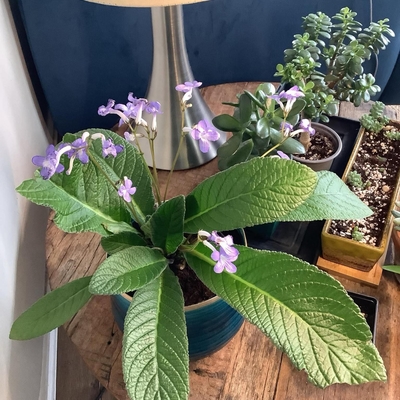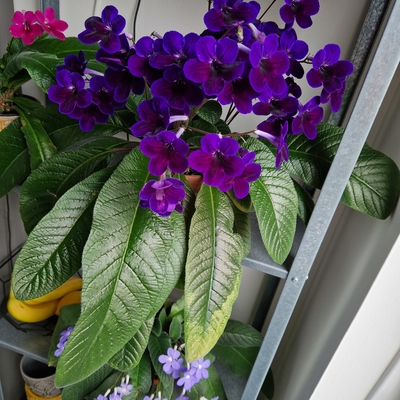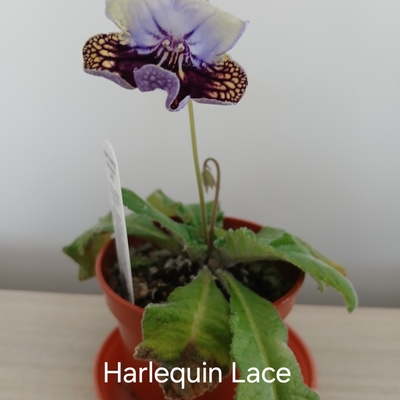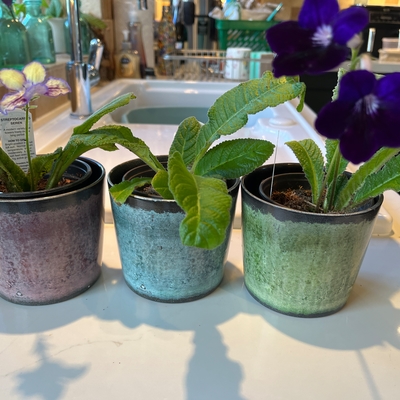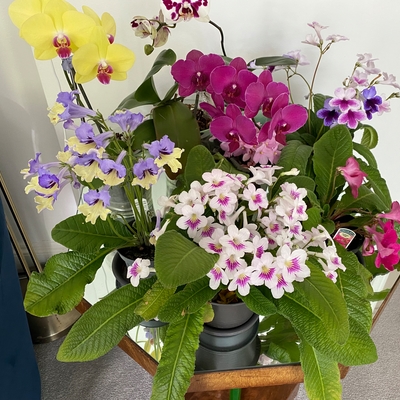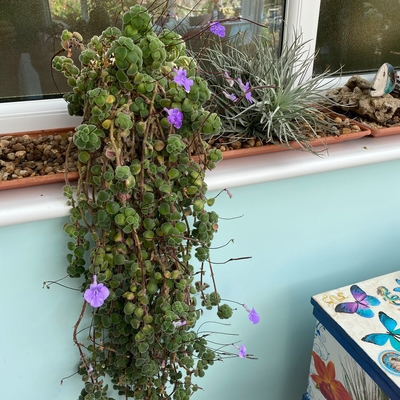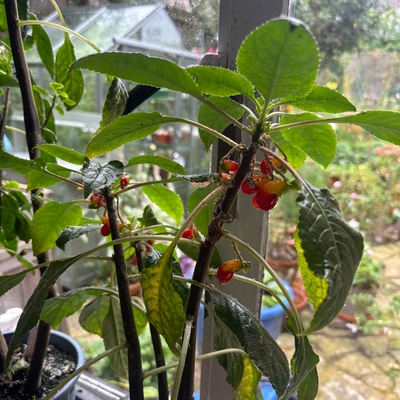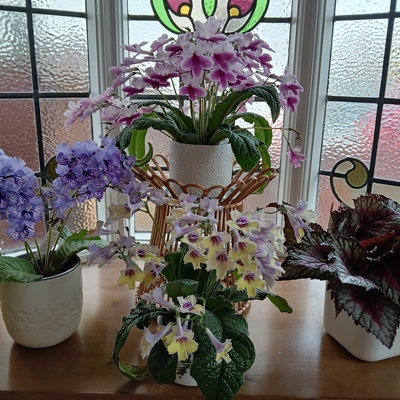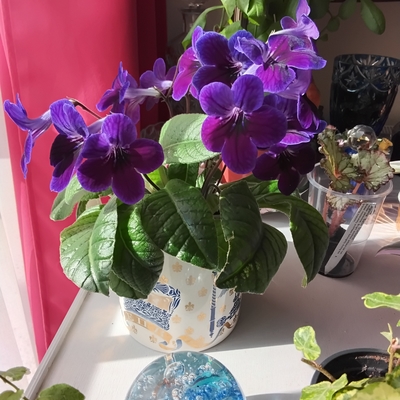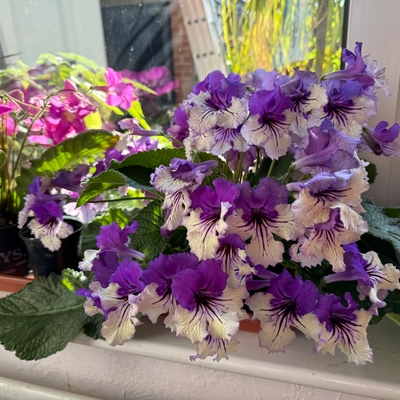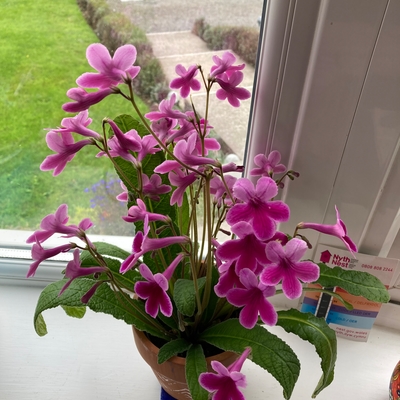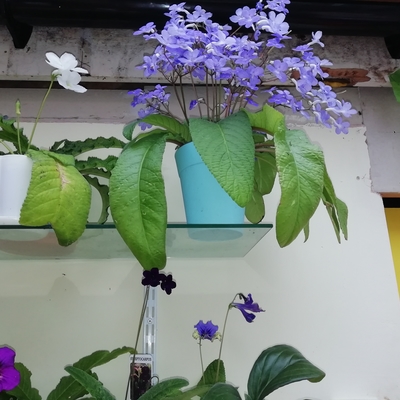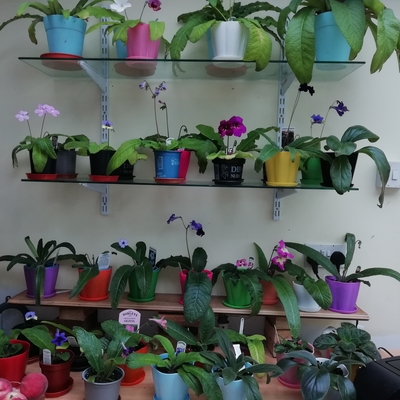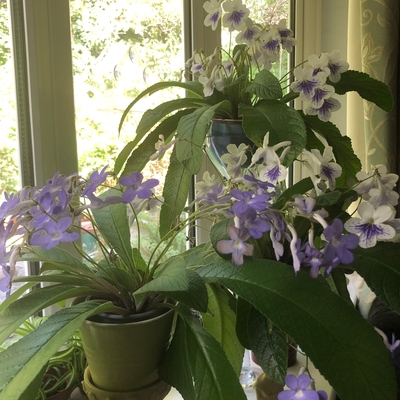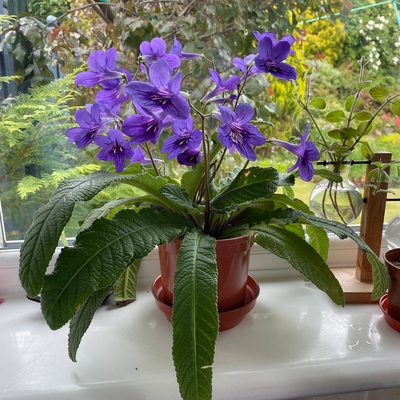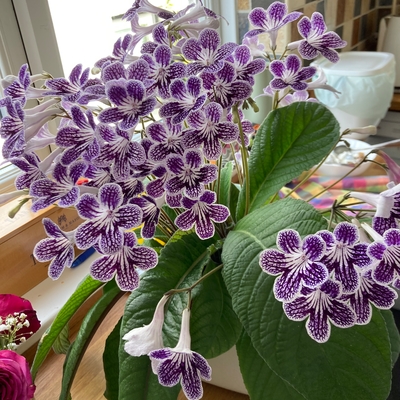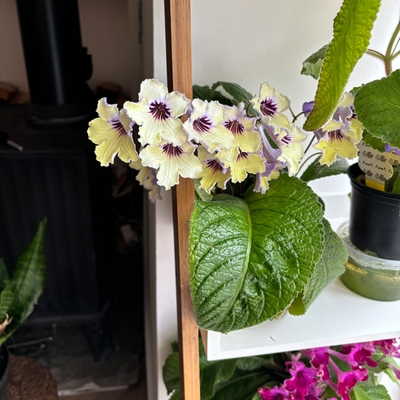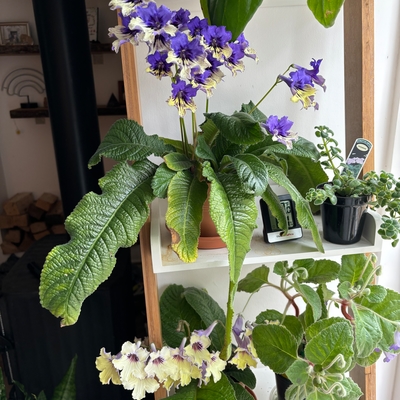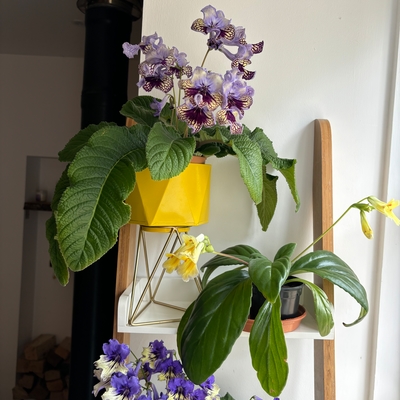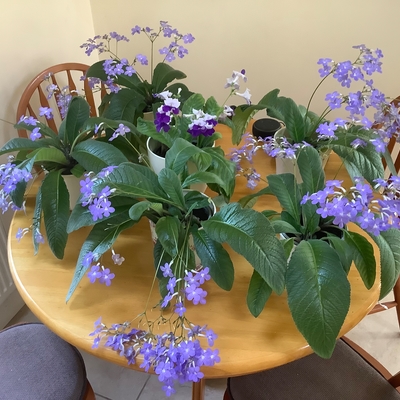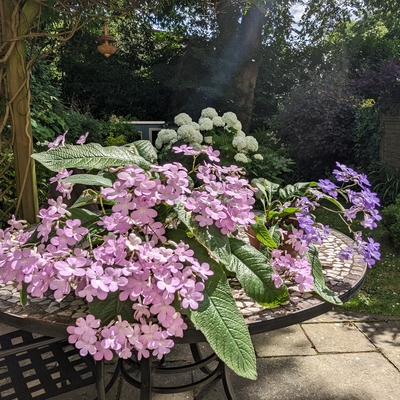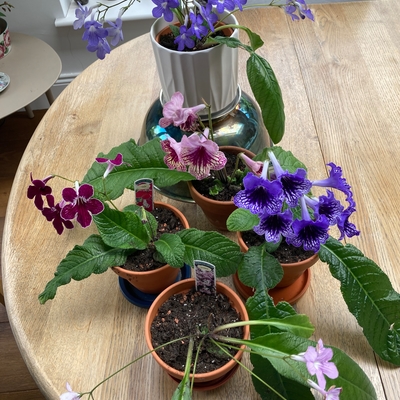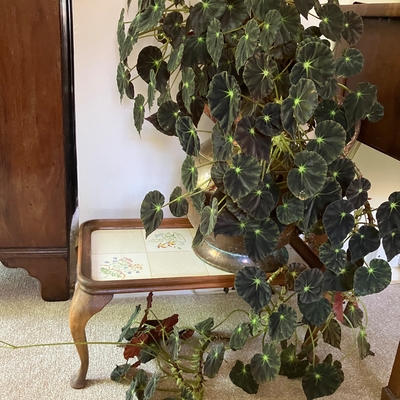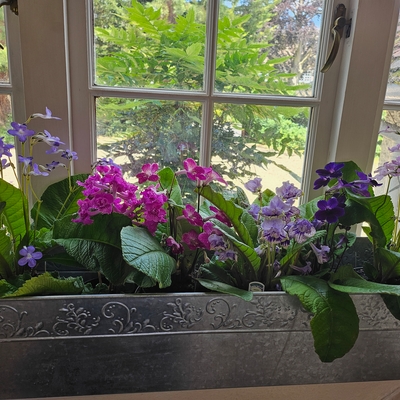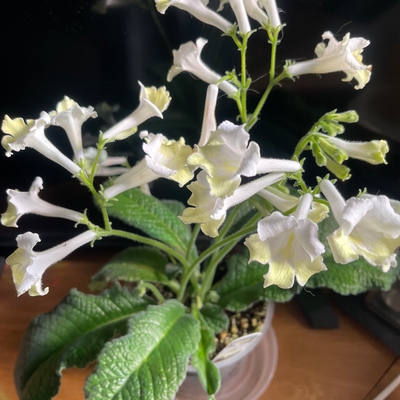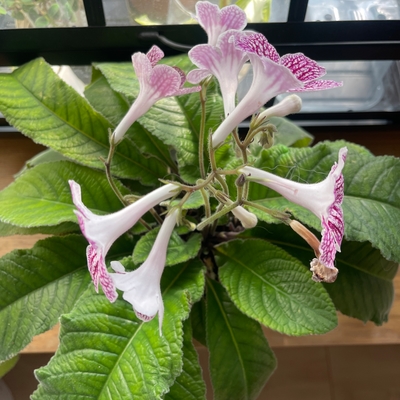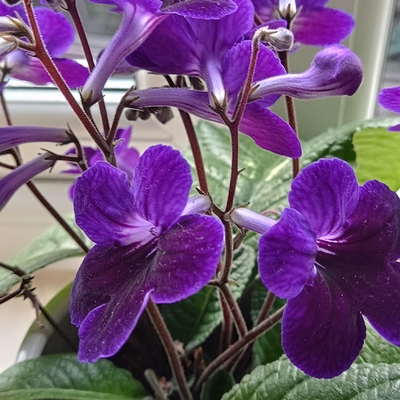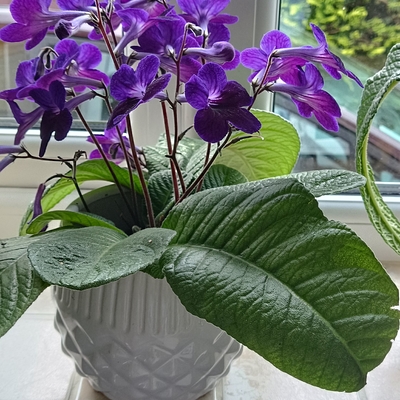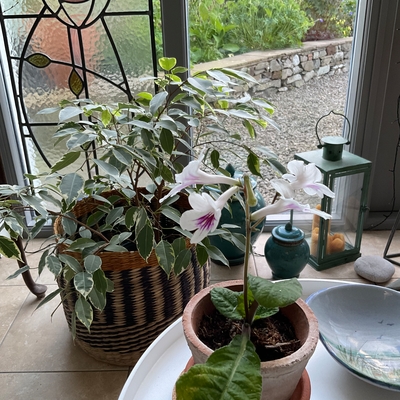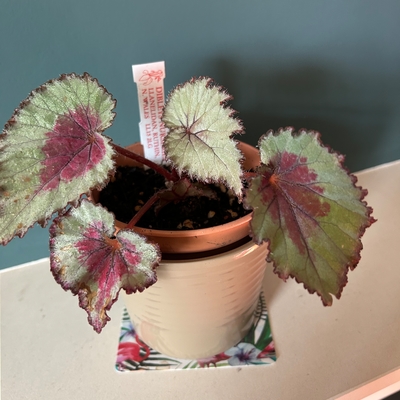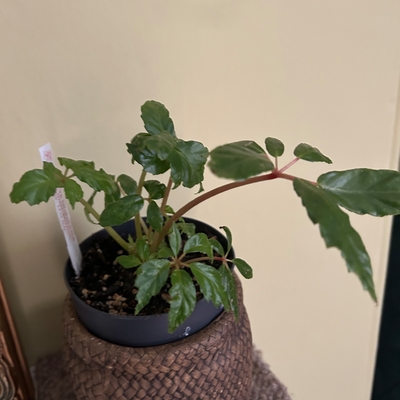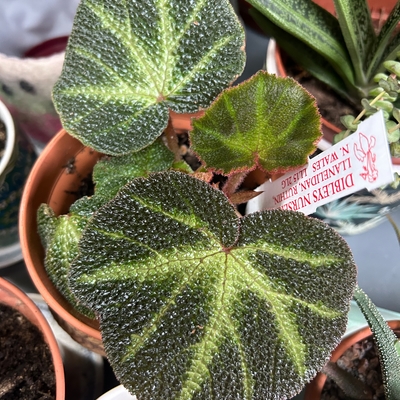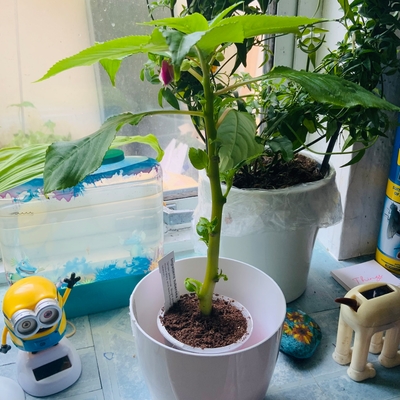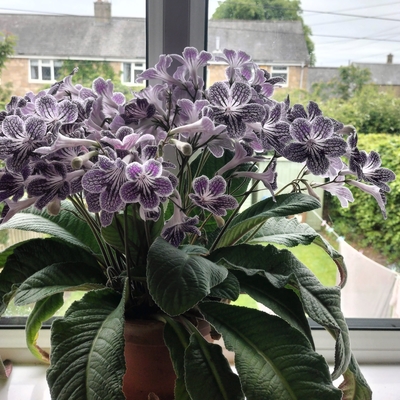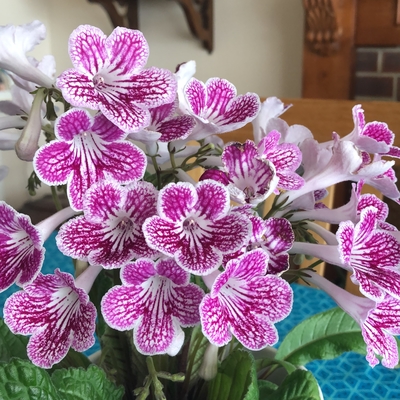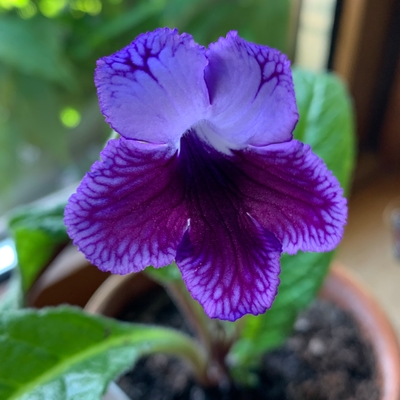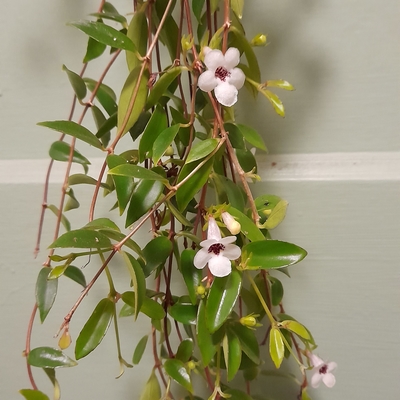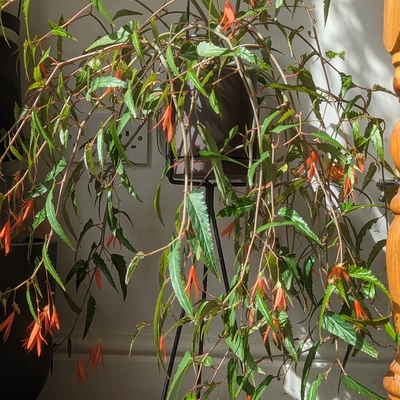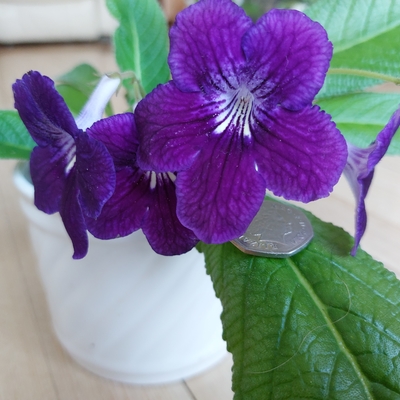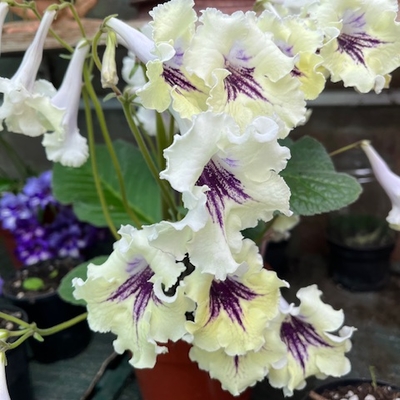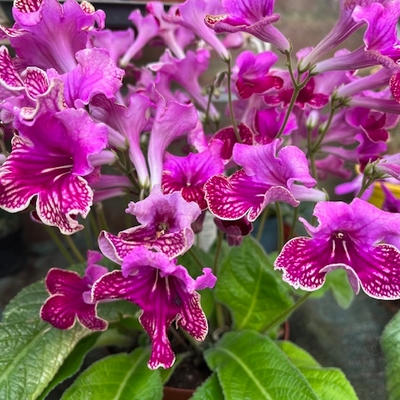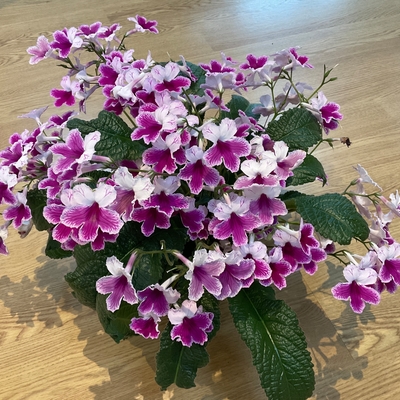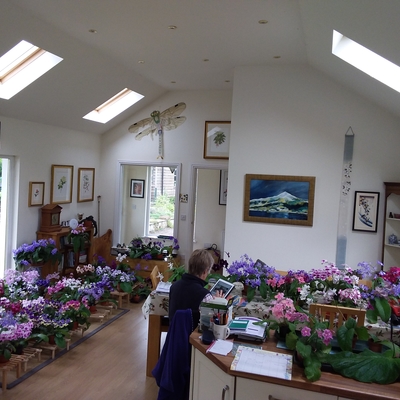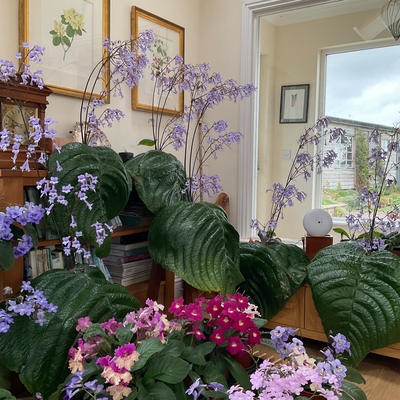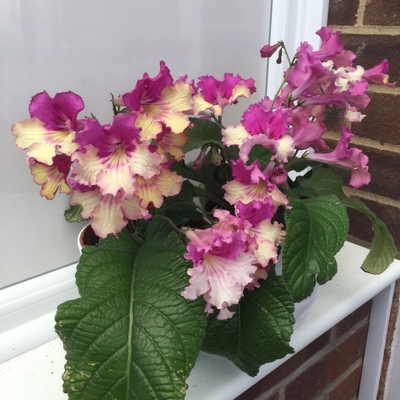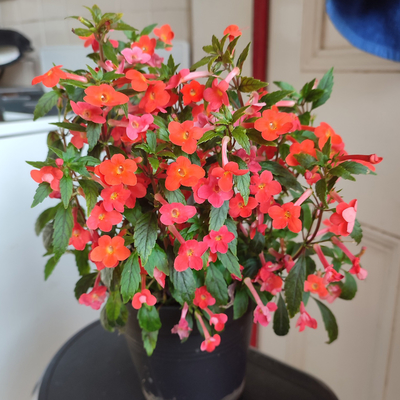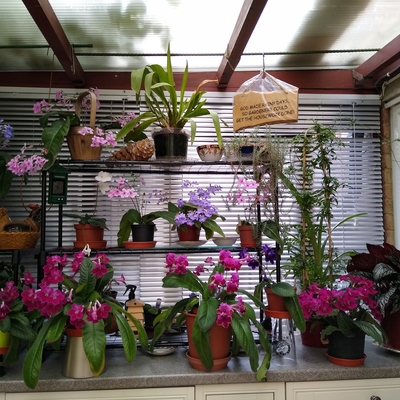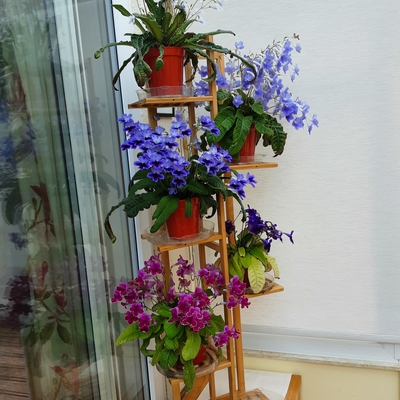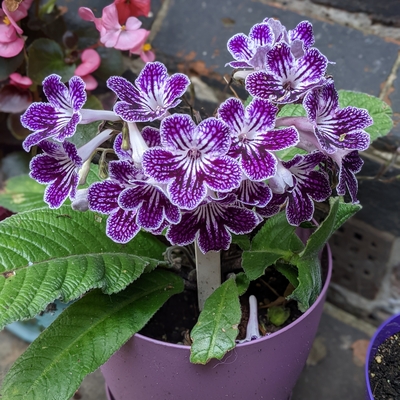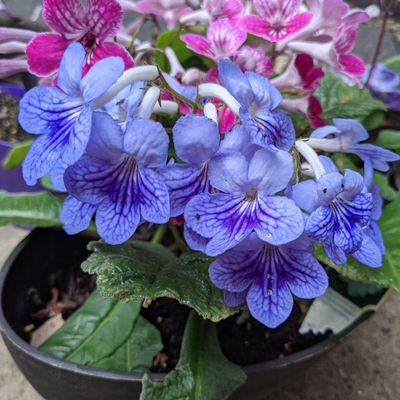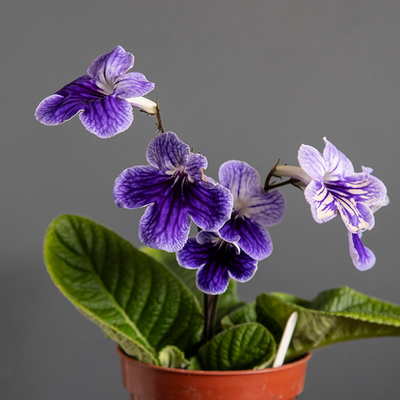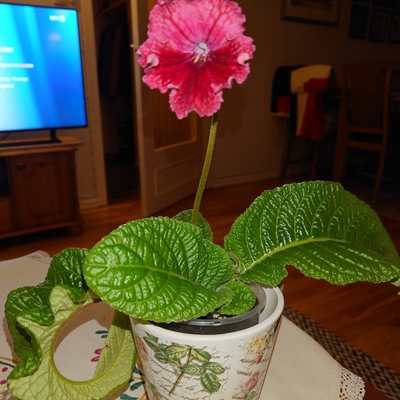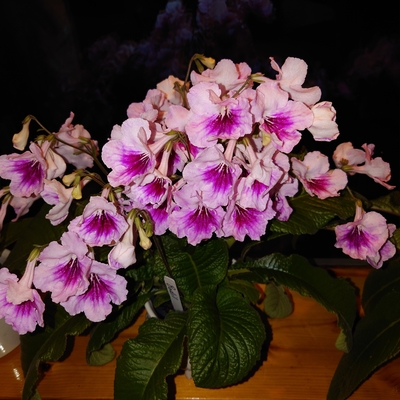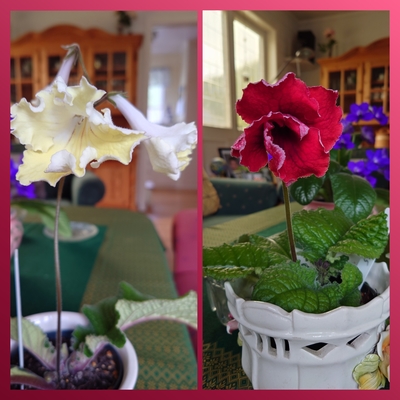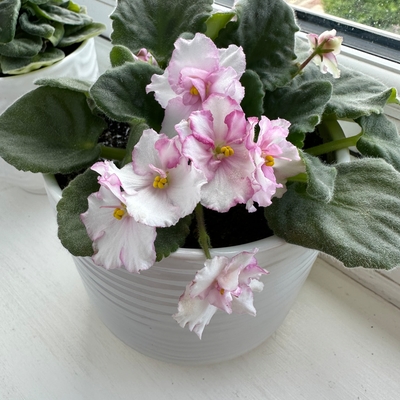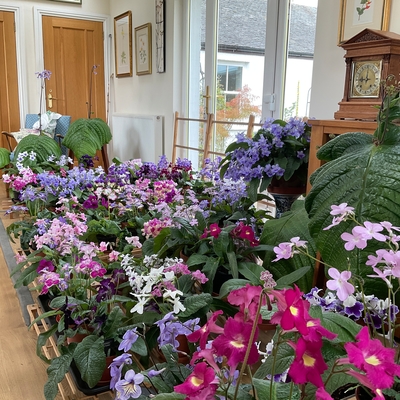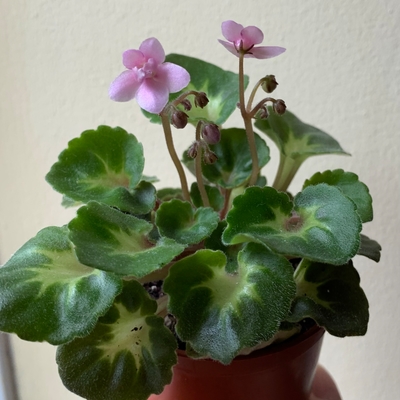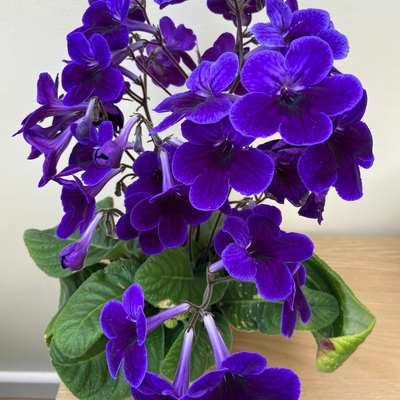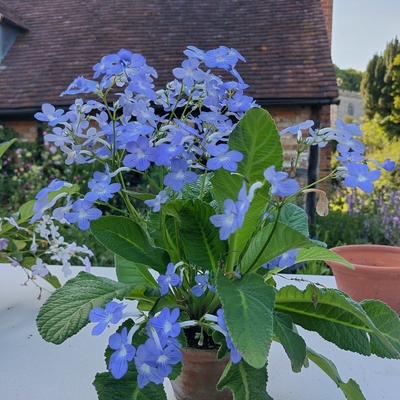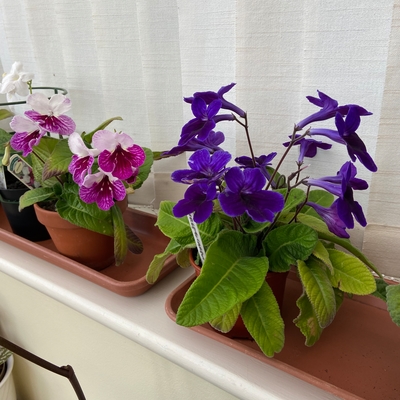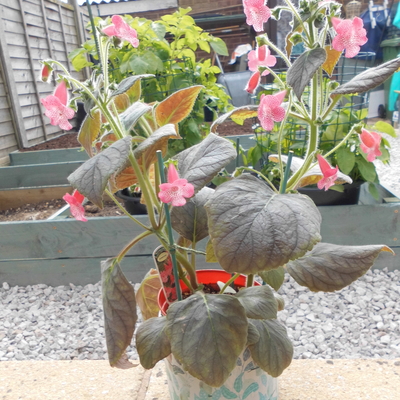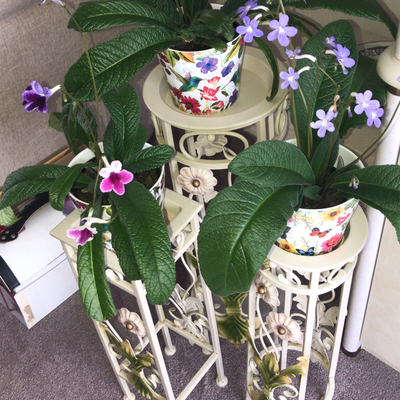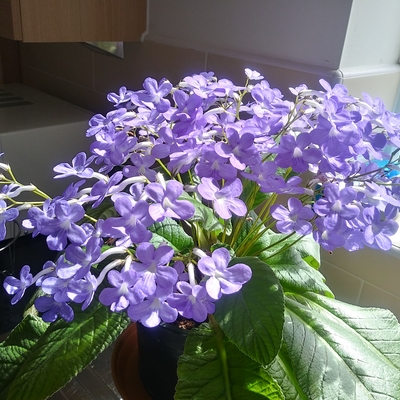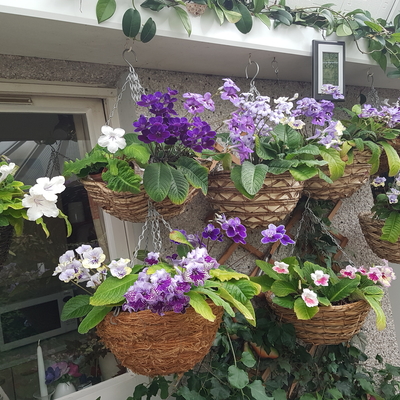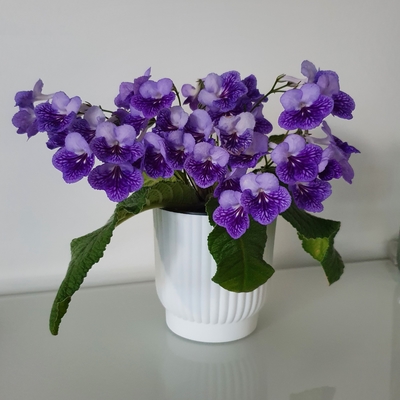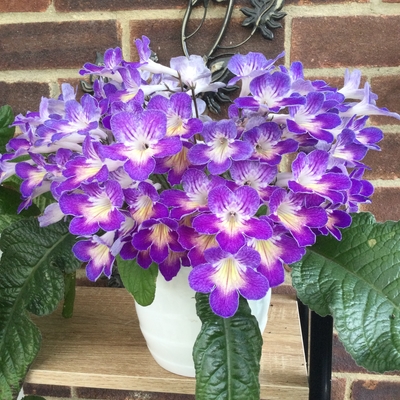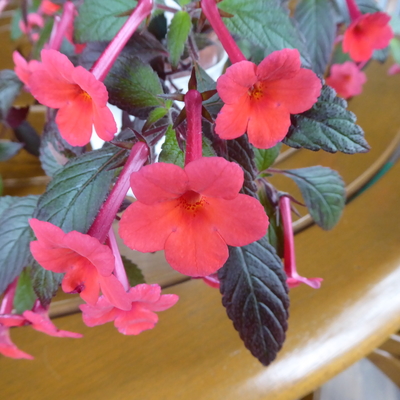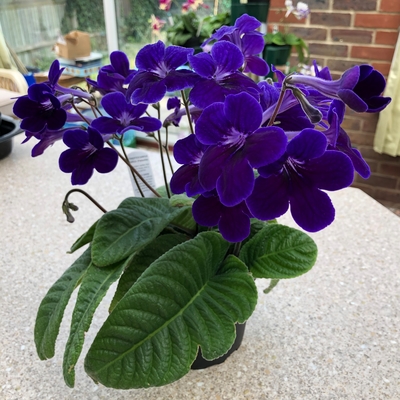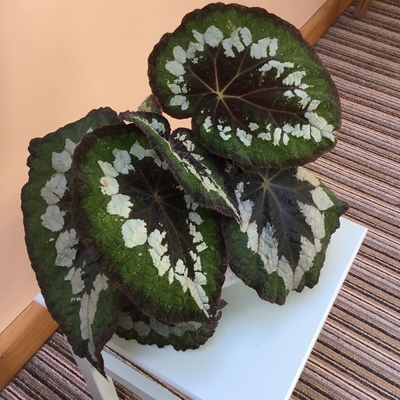Begonia Growing Tips

Begonia Care
The begonias are a huge genus with over 2000 species which are indigenous to a vast range of countries - South America, Africa, India, China, and many more. Knowing the type of begonia you are growing will help you understand their needs, the species varieties also grow in a range of climates– tropical, sub-tropical and temperate.
The plants we concentrate on are mostly foliage begonias with reasonably uncomplicated growing needs. We grow all our begonias in the same greenhouse, so they all must enjoy the same conditions.
These are general instructions and there will always be a few varieties that deviate slightly from them in their needs.
Begonia Rex

This group tend to have the most vividly coloured foliage – pink, purple, green, silver and red. Many have been bred from species that come from forests in northeast India where the humidity levels are quite high. These are the showiest of all the begonias and if you follow a few simple rules, they are quite easy to grow.
- Light – Bright but no direct sunlight.
- Water – Moderately and allow the surface of the compost to become dry before re-watering. Don’t let the compost become saturated.
- Humidity – High humidity, grow over damp gravel or moss. The leaves like a high humidity around them or you will find they go brown and crispy at the edges. Another good place to grow rex begonias is in a bathroom.
- Feed – During spring and summer feed plants fortnightly with a foliage (high nitrogen) food. Only start feeding when the roots have started to appear out of the drainage holes underneath the pot.
- Compost – We grow our plants in a commercial houseplant compost but an open houseplant compost with extra drainage provided by some perlite is also suitable.
- Temperature – Between 16°C – 30°C but large fluctuations in temperature over a few hours can stress plants, they prefer to keep within a few degrees’ day and night.
The leaves of the rex-cultorum group can be paper-thin and will damage easily, whether from sunshine, heat, or the dreaded powdery mildew. The surface rhizome on a mature begonia rex will act as a reservoir of energy and even if all the leaves are damaged new growth will come from it.
Super Rex Begonias

Treat as for Rex-cultorum but expect taller plants with upright stems.
Cane/Shrub Begonias



Most of these grow tall with a visible stem and large clusters of flowers on mature stems. Most cane/shrub begonias can be grown outdoors in the summer but position them in part shade where they won’t get scorched by the midday sun.
- Light – Bright with morning or evening sunshine.
- Water – Regularly as the surface of the compost starts to dry, large specimens will require watering every couple of days. If you water from underneath only leave in water for a couple of minutes.
- Humidity – Will grow in a wide range of atmospheres and are not as fussy as the rex varieties.
- Feed – If you want the benefit of flowers then feed with a tomato/high potassium feed fortnightly during the spring and summer.
- Compost – A coir-based houseplant compost.
- Temperature – Minimum temperature of 10°C.
Rhizomatous Begonias


These are mostly grown for their foliage shape and their texture. There are varieties in this group with small leaves and some with larger leaves that are divided into leaflets. These are generally very tolerant plants and mature plants will produce flowers in late spring.


- Light – Bright and some early morning or late evening sunshine.
- Water – Lightly and only as the surface of the compost and to a depth of 1cm starts to dry.
- Humidity – Will grow in a wide range of atmospheres and are not as fussy as the rex varieties.
- Feed – If you want the benefit of flowers then feed with a tomato/high potassium feed fortnightly during the spring; otherwise feed spring and summer with a high nitrogen food.
- Compost – A coir-based houseplant compost.
- Temperature – Minimum temperature of 12°C.
___________________________
PROBLEMS AND PESTS
Powdery Mildew – The initial signs of this fungal disease are circles of discolouration on the upper and lower surface of a leaf and depending on the begonia variety the colouration can vary from yellow, brown, or white, this fungus can also appear on leaf stems where it is more likely to be white.
Once a fungal attack is seen treat with a fungicide or SB Plant Invigorator, repeat applications may be needed. Unfortunately, the areas of leaf that have been infected by this fungus never recover – remove the damage to allow fresh growth to appear.
Good air circulation around the plant and a healthy, strong plant will also help prevent any fungal issues. Plants that are stressed and struggling will be more prone to fungal issues.
Aphids – Difficult to see on begonias as they hide under the leaves or amongst the flower buds. Aphids tend to be found living off the youngest growth. Squash as many as possible by hand and if a big infestation treat with an insecticide – but bear in mind that every aphid needs to be touched by the spray and treatment is generally needed to be repeated several times to eradicate them.
Vine Weevil – A nocturnal insect that will nibble the edges of leaves, the biggest damage is done by the larvae which live in the soil and destroy the roots and rhizomes. These can be treated with applications of nematodes in the spring and summer when the larvae are present.

